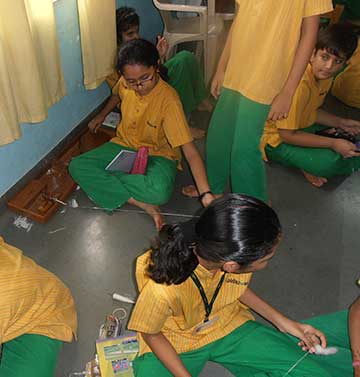Kavita Anand
The year 2000 was for me a turning point. I was given a wonderful opportunity to use everything I had ever learned about education, to set up a school in Kings Circle, Mumbai, belonging to a Kutchhi Jain Trust. The brief was simple: to set up a state of the art school in which students would be proud and happy to be Indian. There was an implicit unease in the management that children were ‘aping the west’ without knowing what being Indian really meant. They wanted the children in their new school to know their heritage well and be at ease anywhere in the globe.
 So when it came to the uniform, I had to think “Indian”. To me, India in the best sense embodied value for community and ecology. And anyway, I was not naturally inclined towards a uniform for students! So, the uniform had to be more than just a garment that every child wore – it had to be eco-friendly and it had to be of benefit to others. It needed to tell the wearer many stories of why it had been created and what it symbolized. It had to do more than represent a school. I was determined to make the uniform an education in itself.
So when it came to the uniform, I had to think “Indian”. To me, India in the best sense embodied value for community and ecology. And anyway, I was not naturally inclined towards a uniform for students! So, the uniform had to be more than just a garment that every child wore – it had to be eco-friendly and it had to be of benefit to others. It needed to tell the wearer many stories of why it had been created and what it symbolized. It had to do more than represent a school. I was determined to make the uniform an education in itself.
The first hurdle was the cloth. I proposed khadi cotton and to my delight, it was unanimously approved by the management and administrative team. Even though the only khadi cloth we could buy in bulk was a dull beige colour, we took it on as a trial. The design of the uniform was the next hurdle. I was adamant it should be unisex. I had seen the negative impact of early segregation of the sexes by attitude and clothing. So we asked designer Aarti Kaalia to give us some design options. Her brief was that the uniform should consist of a loose pant that would enable children to sit with ease both on the floor and on the chair, and a short kurta with a collar that would protect the back of the neck when walking and sitting in the sun.
The author is Executive Director, Adhyayan Quality Education Services Pvt. Ltd. She continues to advise the management on Shishuvan and other Education Projects. She can be reached at kavita.anand@adhyayan.asia.
